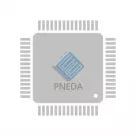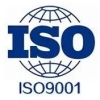GPIO: The core connection from smart home to industrial automation

Today, let's talk about GPIO! GPIO, in this age of technology, this is very important! It acts as a bridge between smart devices and users' needs. Whether it's a smart home system in a home or a massive industrial control automation, GPIO can provide a flexible way to communicate, control and interact with devices. Let's take a closer look at the various uses of GPIO and how it has become a central part of the design and development of modern electronics.
Let's start with what GPIO is and what it does. GPIO is a programmable interface that is supported by almost all microcontrollers and single board computers, such as Raspberry PI, Arduino, etc. Unlike pins with fixed functions, GPIO is flexible and can do many things: it can act as an input or output signal, it can control LED lights, it can read sensor data, and it can even act as a communication interface. Just make up a simple piece of code, developers can set the GPIO pin to a specific function, to achieve that kind of personalized application, old awesome!
Look at the application of GPIO in the smart home. As the concept of smart home becomes more and more popular, the role of GPIO is becoming more and more obvious. Devices such as smart light bulbs, smart sockets, and home automation controllers rely on GPIO for a variety of functions. For example, smart bulbs controlled by GPIO can adjust the brightness according to the light and dark changes in the home environment, and realize intelligent management of "follow the light" through sensor data.
Smart home devices are generally equipped with a variety of sensors, such as CWSC1224NK temperature and humidity sensors, light sensors, motion sensors, etc. These sensors can be connected to a single chip microcomputer through GPIO interface for real-time data acquisition and processing. For example, if the motion sensor detects someone passing by, the light can be turned on via the GPIO signal, which is both convenient and energy efficient.
More complex smart home systems can also output several GPIOs into a whole block, such as in home security monitoring, combining smoke detectors, door and window sensors and alarms into a very perfect security system. The home can be monitored and managed at all times via mobile devices or voice-activated assistants, and this is where GPIO plays a key role!
Let's talk about the role of GPIO in industrial automation. In the industrial sector, GPIO is widely used in automated production lines, robot control systems and monitoring systems. In order to make the production process efficient, industrial control systems need to connect sensors, actuators and controllers, and GPIO meets this need.
At production time, sensors collect real-time data such as temperature, pressure and speed via GPIO and feed it back to a central control unit. The control unit responds to this data by sending instructions via GPIO to control the operation of devices such as robotic arms and conveyor belts. This efficient real-time data transmission and processing ensures stable and efficient production lines.
For example, in intelligent manufacturing, the use of GPIO interconnection devices can effectively improve the automation level and production efficiency of equipment. In some high-end applications, GPIO can also be combined with more complex communication protocols, such as I2C, SPI, etc., to make the system more flexible and scalable.
GPIO is also useful in education and prototyping! GPIO is a baby not only in industry and the home, but also in the field of education. Many electrical engineering courses and programming courses use GPIO as part of their instruction. Students can master the operation and application of GPIO through practical projects, such as building a simple LED flicker, temperature monitor, micro-robot, etc.
With open source hardware platforms such as Raspberry PI and Arduino, students can prototype easily. These platforms have many GPIO interfaces, and students can write some simple code to control the device, which stimulates their creativity and hands-on skills. This practical experience not only helps students understand the basic principles of electronics, but also lays a good foundation for their future study and work in related fields.
Let's talk about the future of GPIO. With the rapid development of Internet of Things (IoT) technology, the importance of GPIO is even more prominent. In response to the increasing demand for smart device connectivity, new GPIO standards and protocols continue to emerge to meet higher data transfer speeds and more complex control needs. At the same time, combined with the popularity of 5G networks, GPIO's real-time interaction capabilities can support more innovative applications, which is great!
In addition, the rise of artificial intelligence may also make the use of GPIO more widespread. In future smart home and industrial systems, GPIO is not only responsible for basic inputs and outputs, but is more likely to be combined with AI algorithms to achieve self-optimization and adjustment by learning user behavior patterns. This shift can make smart devices more user-friendly and provide more efficient and convenient services.
Finally, I will talk about the relationship between GPIO and sustainable development. In our increasingly sustainable society, the potential of GPIO for energy conservation and environmental protection cannot be underestimated. Through intelligent control design and flexible use of GPIO control, users can monitor and adjust energy usage in real time, greatly improving efficiency and reducing resource waste. For example, in smart buildings, temperature and humidity sensors combined with GPIO control systems can achieve automatic switching of air conditioning and lighting, optimizing energy consumption.
By combining GPIO's flexibility and intelligent management systems, homes and industries can move in a greener, more sustainable direction, using resources wisely and protecting the environment.
The popularity and application of GPIO technology has indeed brought unprecedented convenience and possibilities to various fields. From smart homes to industrial automation, GPIO makes interacting with different devices simple and efficient. With the continuous progress and innovation of technology, the application prospect of GPIO is quite broad, and it will become an important driving force to connect and promote the future intelligent world!
您可能感興趣的產品
 |
CAR2548FPBC-Z01A | AC/DC CONVERTER 48V 2500W | 5490 More on Order |
 |
CAR1248FPB-Z01A | AC/DC CONVERTER 48V 850W | 2988 More on Order |
 |
UNDT006A0X3-SRZ | DC DC CONVERTER 0.45-5.5V | 7704 More on Order |
 |
AXH010A0G3 | DC DC CONVERTER 2.5V 25W | 8424 More on Order |
 |
QPW060A0P1-H | DC DC CONVERTER 1.2V 72W | 2232 More on Order |
 |
NXA025A0X-S | DC DC CONVERTER 0.8-5.5V 138W | 6444 More on Order |
 |
ATS025A0X3Z | DC DC CONVERTER 0.8-5.5V 137W | 6300 More on Order |
 |
QHW075F1 | DC DC CONVERTER 3.3V 50W | 4428 More on Order |
 |
MW010BK | DC DC CONVERTER +/-12V 10W | 8802 More on Order |
 |
LW030A1 | DC DC CONVERTER 5V 30W | 7092 More on Order |
 |
LW020F871 | DC DC CONVERTER 3.3V 20W | 8028 More on Order |
 |
LW010A | DC DC CONVERTER 5V 10W | 7578 More on Order |
 |
JFW100A | DC DC CONVERTER 5V 100W | 6372 More on Order |
 |
JFW075A1 | DC DC CONVERTER 5V 75W | 8136 More on Order |
 |
HW010A0F1 | DC DC CONVERTER 3.3V 33W | 2268 More on Order |
 |
EQW025A0Y1-S | DC DC CONVERTER 1.8V 45W | 6282 More on Order |
 |
EQW023A0G1 | DC DC CONVERTER 2.5V 58W | 8748 More on Order |
 |
EQW012A0A1-S | DC DC CONVERTER 5V 60W | 5256 More on Order |
 |
DW025AF-M | DC DC CONVERTER 5V 3.3V 25W | 8640 More on Order |
 |
150051263 | DC DC CONVERTER | 8334 More on Order |
 |
QBVW025A0B61-HZ | DC DC CONVERTER 12V 300W | 7362 More on Order |
 |
EBVW020A0B941Z | DC DC CONVERTER 12V 240W | 8280 More on Order |
 |
KNW020A0F41-88Z | DC DC CONVERTER 3.3V 66W | 4788 More on Order |
 |
EHHD015A0A41Z | DC DC CONVERTER 5V 75W | 43 More on Order |









